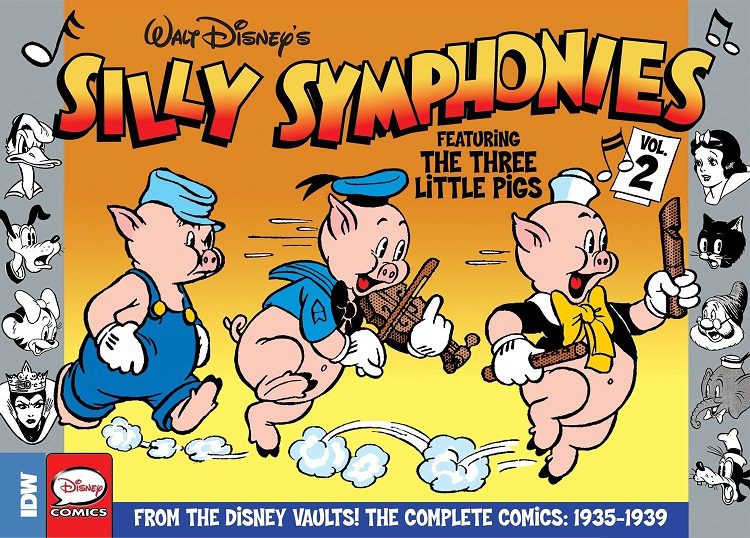
From 1929 to 1939, the Walt Disney company created 75 original animated short films under its Silly Symphonies line. As opposed to the Micky Mouse short films Disney was producing at the same time the Symphonies were designed to be whimsical pieces devoid of continuity or the need to feature regular characters (though several characters quickly stood out and became regulars in the films). In many ways, these shorts were a means by which Disney could experiment with the animation without fear of hurting his brand. The films helped dramatically improve what could be done with animation in terms of character effects, dramatic storytelling, and the invention of the multiplane camera which allowed animated films to create tracking shots which opened up how they could tell a story. Silly Symphonies were hugely successful becoming massively popular nationwide, and won the Academy Award for Best Animated Short Films seven times. It also spawned a series of children’s books, comic books, and newspaper comic strips.
Walt Disney’s Silly Symphonies Vol. 2 presents the complete comic strips from 1935-1939. It features such characters as The Three Little Pigs, Three Little Kittens, Elmer Elephant, Donald Duck, Snow White and the Seven Dwarfs, and more. For the most part, the comics are taking characters that were created in the animated shorts and telling similar (though different) stories for the newspapers. The heroes get into some kind of mild trouble and over the course of several strips find a way out of it and end happily ever after (at least until the next time they appear).
Of particular interest are the Donald Duck strips and an adaptation of Snow White. On film, Donald Duck was just beginning to break away from being a mere sidekick to a full-blown star. These strips show some significant development in his character (not to mention his physical appearance). In the early strips contained in this book, Donald remains silent, a non-talking but still easily angered duck who overcomes his annoyances with violence, and usually pays the price for it. Later, he becomes much more talkative and physically like the duck we know now, and actually spends a few strips trying to reform his angry ways. The October 17, 1937 strip is of particular importance to Donald Duck fans as it introduces his three nephews, Huey, Dewey, and Louie to the world.
Disney released its first full length animated feature, Snow White and the Seven Dwarfs on December 21, 1937. Having learned how well the comic strips worked in promoting his short films, he turned the Sunday pages into an introductory device for Snow White. The comic strips tell a very similar story to the movie though in an obviously more episodic method given the nature of Sunday strips, and there are enough differences to keep the reader interested. It’s fascinating that so early on Disney had mastered various media outlets to promote his films and become the cash cow we know today.
These strips are very simplistic. They tell very simple stories, often in rhymed verse and seem a bit old fashioned to the modern eye. Personally, I find them to be interesting from a historical perspective but a bit tedious to sit and read through. However my five-year-old daughter loved them and she had a marvelous time sitting in my lap as I read them to her.
As per usual The Library of American Comics in conjunction with IDW has created a wonderful collector’s book that beautifully presents each comic strip as originally published. The large, colorful book comes with a sturdy hard back and a nice-looking cover that’s perfect for a collector’s coffee table or display case. There is an informative essay giving the history of the Symphonies at the beginning of the book and each new story also comes with a brief introduction.
For comic book, animation, and Disney buffs this collection is an absolute must-have. The strips are terrifically bound and presented in a book that’s designed to be treasured.